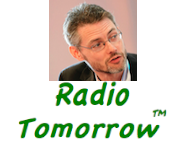Radio Tomorrow with James Cridland
Chances are, if you’re involved in a radio station, you’ll be available in a few different ways. Perhaps on FM, online, in an app, or in other ways.
We make stations available in different ways to attract more audience, and encourage trial.
All the research I’ve ever seen appears to show that a mobile phone is used as a radio “for when you can’t get to a radio”. Online streaming does really well in the workplace, particularly if you’re using a good, high quality desktop player on your website. Radio through the TV – perhaps via cable, perhaps on broadcast space owned by your owning company – brings live radio into the front room – or into a child’s bedroom while they do their homework.
In many parts of the world, though, we are very good at getting our stations in different places – and then entirely neglecting to mention it.
You’d be surprised how many people don’t know that you’re available in a certain way: and would listen more if they did know.
If you hide in an electronics showroom in a DAB country like the UK or Australia, you’ll hear people asking whether this digital radio will pick up their favourite radio station. If they don’t know that, you have a problem.
Now: many stations have a top-of-hour ident. In the US, it’s required by law; in most other countries, it isn’t, but most stations do it, since most stations carry news bulletins at the top of the hour, and have an expansive and impressive-sounding news jingle.
This is the most natural place to remind listeners where they can find you – and remind them of your listening proposition. Every hour. All day. Some examples might be:
● Online, on the iHeartRadio app, on digital radio, and on 693 AM… playing good times and great classic hits… this is Brisbane’s 4KQ.
● Online, on Radioplayer Canada, HD2 101.1, and on 980 AM… this is Vancouver’s News and Talk: CKNW.
● Today’s hits, yesterday’s favourites – on your smartphone, online, and FM – this is Magic 106.7, WMJX, Boston.
● On FM, online, on your mobile, and on digital radio: leading Britain’s conversation… this is LBC.
The last one? That’s not the figment of my imagination – it’s how this London station idents itself – and has done so, consistently, for over ten years. And if you wanted to know how it works, here are its audience figures. Turns out this works!
Multi-platform radio is our future – we need to be on the devices our audiences are already using. A group of students in Belgium will certainly tell you how they listen, and on what platform – and chances are, it’s not just FM.
But being there is no use unless we tell our audience we’re there, too.
About The Author
 James Cridland is a radio futurologist: a writer, speaker and consultant on the effect that new platforms and technology are having on the radio business across the world.
James Cridland is a radio futurologist: a writer, speaker and consultant on the effect that new platforms and technology are having on the radio business across the world.
He writes for publications across the world, and runs media.info the worldwide media information website. He also runs a free weekly newsletter with news of radio’s future.
British by birth, James lives in Brisbane, QLD and is a fan of craft beer.

